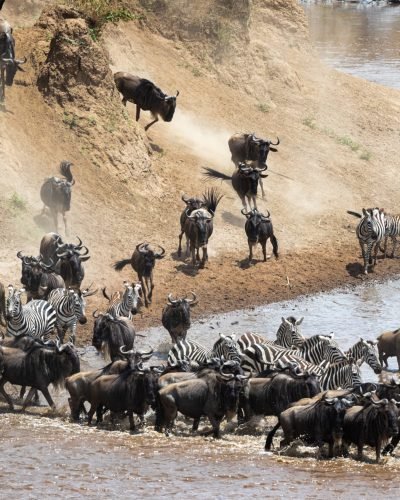Exploring Meru National Park: Understanding the Updated Entry Fees for 2024
As one of Kenya’s cherished natural reserves, Meru National Park stands as a beacon of biodiversity preservation. Managed by the Narok County Council (NCC), the park has long been a haven for wildlife enthusiasts and nature admirers. In a recent development, the NCC has announced revisions to the entry fees for the year 2024. This strategic decision aims to enhance conservation efforts, upgrade infrastructure, and provide more substantial support to local communities.
Understanding the Updated Entrance Fees
For those planning a visit to Meru National Park in 2024, it’s vital to acquaint themselves with the revised entry fees. The management authority has implemented significant adjustments to the fee structure, reflecting ongoing commitments to conservation and sustainable ecosystem management.
Revised Meru National Park Entry Fee Structure
- International Visitors: The entry fee for international visitors has seen a substantial increase, acknowledging the growing interest in experiencing the park’s unique natural beauty and wildlife. Whether you’re embarking on a solo adventure or joining a guided safari, it’s essential to budget accordingly for the updated fees.
- Local Residents: While entry fees for local residents have also risen notably, they remain comparatively lower than those for international visitors. Kenyan citizens and residents have the opportunity to explore their country’s natural heritage at a discounted rate, promoting greater engagement in eco-tourism activities within Meru National Park.
- Children and Students: Special provisions may apply to children and students, offering discounted rates or exemptions from certain fees. Families and educational institutions planning group visits should inquire about eligibility criteria and applicable discounts to optimize their budget.
Supporting Conservation Efforts
It’s crucial to understand that the increased entry fees play a vital role in supporting essential conservation efforts within Meru National Park. Revenue generated from visitor fees contributes to habitat preservation, anti-poaching measures, community development projects, and environmental education programs. By paying the revised entry fees, visitors directly contribute to the long-term sustainability of this ecological gem.
New Meru National Park Entry Fees Structure:
Effective from January 1st, 2024, the updated entry fee structure is designed to accommodate two distinct travel seasons: January 1st to June 30th and July 1st to December 31st. For non-residents, the revised fees are delineated as follows:
Meru National Park Non-Residents Park Fees
(Accommodated inside or outside the Park) – Per Day
| Category | Fee (USD) |
|---|
| Adults | 80 |
| Children (Below 12 years) | 40 |
Meru National Park Citizens Park Fees
(Accommodated inside or outside the Park) – Per Day
| Category | Fee (KES) |
|---|
| Adults | 1000 |
| Children (Below 12 years) | 500 |
Meru National Park East African Residents Park Fees
(Accommodated inside or outside the Park) – Per Day
| Category | Fee (KES) |
|---|
| Adults | 1500 |
| Children (Below 12 years) | 750 |
To ensure a smooth transition, the NCC emphasizes that these new rates will apply to all visitors entering Meru National Park from January 1st, 2024. Accordingly, the NCC will adjust all existing confirmed and provisional bookings to align with the updated entry fees.
Meru National Park Vehicle Entry Charges – Per Day
| Vehicle Type | Fee (KES) |
|---|
| Saloon Car | 300 |
| Minibus | 500 |
| Overland Truck | 1000 |














